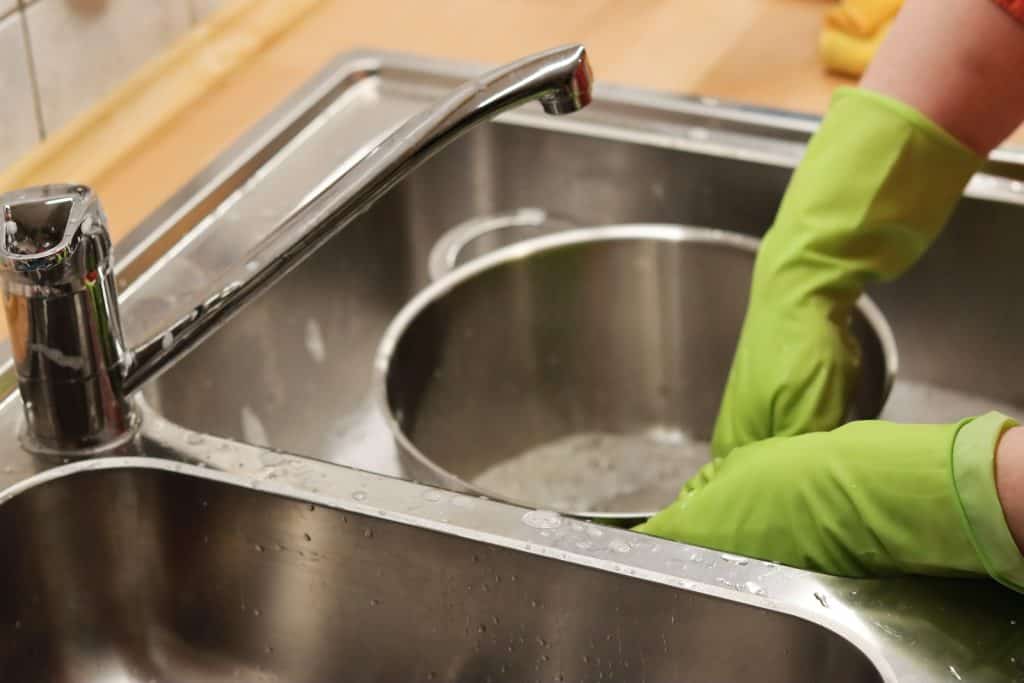Washing dishes is a task we all have to face, be it at home, at work, or during a gathering with friends and family. In this detailed article, we will tackle how to wash the dishes effectively and efficiently. There are several factors to keep in mind as you get your hands wet, and we’ll discuss useful hints and tips from the selection of cleaning agents to the drying of your clean dishes. So, let’s dive right in and learn the best practices on how to wash the dishes.
Prepping for Washing Dishes

Clearing Counter Space
The first step in washing dishes is to clear your counter space. Make sure you have a designated area for washing and rinsing dishes, as well as a space for your drying rack or a clean towel to lay your dishes on after washing.
Sorting Dirty Dishes
Set up an organized system for sorting dirty dishes. Separate glasses, plates, bowls, and serving dishes to make the washing process more efficient. Place heavier items, like pots and pans, at the bottom of your sink or dishpan filled with soapy water, allowing them to soak for a while to loosen any stuck-on food particles.
Throwing Away Excess Food
Before you begin washing, be sure to throw away any leftover food. Scrape excess food into the trash can or garbage disposal to avoid clogging your sink and making washing dishes harder.
How to Wash the Dishes: Techniques and Tips
Filling the Sink with Hot Water
Fill your sink or dishpan with hot water, as hot water helps kill bacteria and break down stuck-on food. Add dish soap to create suds and make it easier for you to wash dishes by hand. If you have a double sink, fill the second sink with warm water for rinsing the dishes.
Washing Lightly Soiled Dishes First
It’s best to wash dishes by hand in order of how dirty they are, starting with lightly soiled items such as glasses and cups. This helps to keep your dish soap and water as clean as possible for the heavier, dirtier items.
Scrubbing Stuck-On Food
For dishes with stubborn, stuck-on food, sprinkle some baking soda onto the dish and use a scrub brush or steel wool to scrub away the debris. Baking soda is a natural abrasive that helps to break up the food particles without scratching your dishes.
Hand Washing Delicate or Sharp Items
Be cautious when you hand wash dishes such as sharp knives, delicate glassware, or cast iron pans. These items should be washed separately to avoid damaging them or causing accidents in the sink.
Rinsing Dishes
Once your dishes are clean, rinse them in the second sink or under running water. Make sure to rinse all soapy water and debris off of the dishes to ensure they are thoroughly clean. Even in a double sink setup, always rinse the dishes before placing them in the rinsing sink.
Drying and Storing Clean Dishes

Air Drying Dishes
In most cases, allowing your dishes to air dry is the most sanitary and energy-efficient method. Set up a dish drainer or drying rack near your rinsing sink, and place the clean dishes on it, so they can air dry.
Towel Drying Dishes
If you prefer to dry your dishes immediately, use clean dish cloths or paper towels to dry them off. Make sure to replace dirty towels with clean ones, as you don’t want to reuse a dirty towel on freshly washed dishes.
Storing Clean Dishes
Once your dishes are dry, put them away in their designated locations in your kitchen. This ensures that your countertops remain clutter-free and helps to keep your dishwashing area organized for the next time you need to wash the dishes.
Tips for Dishwashing Success
Cleaning Cast Iron
Always remember to hand wash cast iron cookware using warm water, without dish soap. After washing, dry pots and pans immediately to prevent rusting. You can also season your cast iron after each use by rubbing a small amount of cooking oil onto the surface.
Replacing Your Sponge Regularly
It’s important to replace your sponges and dish cloths regularly, as they can harbor bacteria. Consider using a new sponge every week, or after cleaning up a particularly messy meal.
Saving Water
To conserve water, it’s best to wash a full load of dishes in one go. Also, once your suds disappear in the dishwater, it’s time to refresh the water, as the soap will no longer be effective.
In conclusion, learning how to wash the dishes is an essential life skill. Mastery of washing dishes by hand is something that’s developed over a decade or more of practice. By following these guidelines, you can ensure your dishes are clean, and you are maintaining a sanitary and organized dishwashing area. Remember, with a bit of practice and attention to detail, you’ll become a dishwashing pro in no time.

